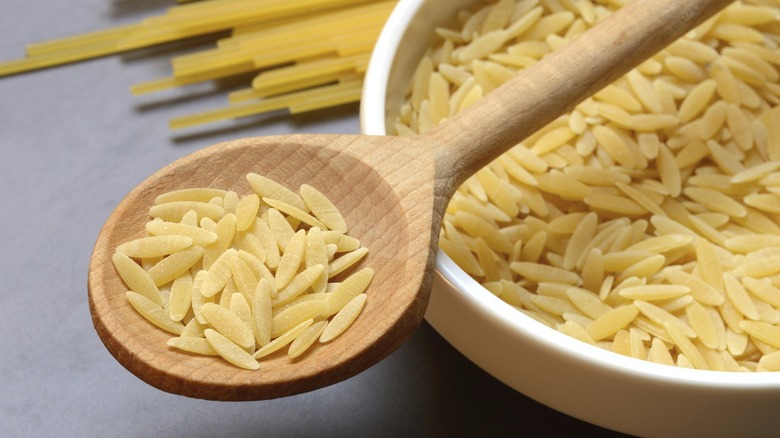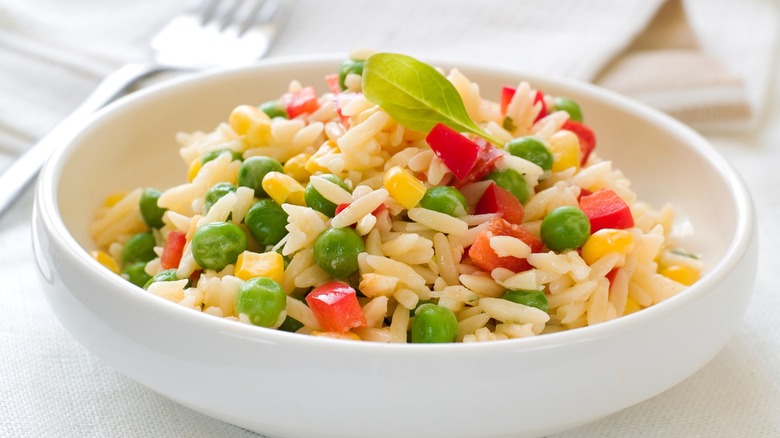Are You Making This Fatal Mistake While Prepping Orzo?
When folks are looking for something different to add to a salad or soup to give it some starchy, textural contrast, orzo is often overlooked. It could be because many aren't familiar with how to cook it. Nicole Johnson, photographer, recipe developer, writer, and founder of OrWhateverYouDo.com, shared some tips with us on avoiding a mistake that can turn orzo into a disaster of a dish.
You might be able to guess what the number one mistake is when cooking orzo, as it is the biggest blunder you can commit with a variety of other foods. (Hint: It can make meat taste gamey.) "Overcooking," Johnson told The Takeout. "It turns to mush fast and clumps up as it cools. If it's meant to hold sauce or stay separate in a salad, you've just wrecked the texture." Although it looks like rice at a quick glance, orzo is technically a small cut of pasta, and it needs to be treated as such.
Johnson said, "Use a timer, salt the water like you would for pasta, and stir early on." In most cases, you want it to be al dente, which only takes about 8 minutes in boiling water. To ensure you aren't overcooking it, "Drain just before it's done and finish it in the sauce or dish," Johnson said. People often rinse pasta to prevent it from overcooking, but you may not want to treat orzo that way. "Only rinse orzo when it's going into a salad or cold prep," Johnson said. "Rinsing removes the starch so it doesn't stick. If you're adding it to soup or a warm dish, skip the rinse and let the starch help with thickening."
Tips for cooking flavorful orzo
On its own, orzo doesn't carry much flavor. However, Johnson had a couple of suggestions for elevating the taste that can turn the simple pasta into something exceptional, one of which shares a commonality with cooking more flavorful rice. "Toast the orzo in a little butter or oil before adding liquid," she said. "That step builds a subtle nutty flavor." A preheated cast iron pan over medium heat should give the orzo a golden brown hue after about three or four minutes, but don't make the mistake of walking away from the pan. The pasta needs to be stirred constantly during that time so it doesn't burn.
Another way to enhance the taste of orzo involves flavoring it towards the end of the cooking process. This can be done with various ingredients, but Johnson suggested this: "Stir in garlic, shallot, lemon zest, or grated cheese to finish, depending on your direction with the dish." You can also boost the flavor without putting in as much effort by skipping the water and add-ins altogether. "You can also use broth instead of water to cook it," Johnson advised.
One of the caveats of not rinsing the orzo after cooking it is that it can tend to stick together. You might want the extra starch if it is being added to a soup, but when served as a side dish, orzo that clumps together isn't all that appealing. Johnson had a solution for this that utilizes a common pantry staple, saying, "A quick toss in olive oil coats the surface and prevents it from clumping. This is especially useful if it's sitting for a bit before serving or if you're meal-prepping."

